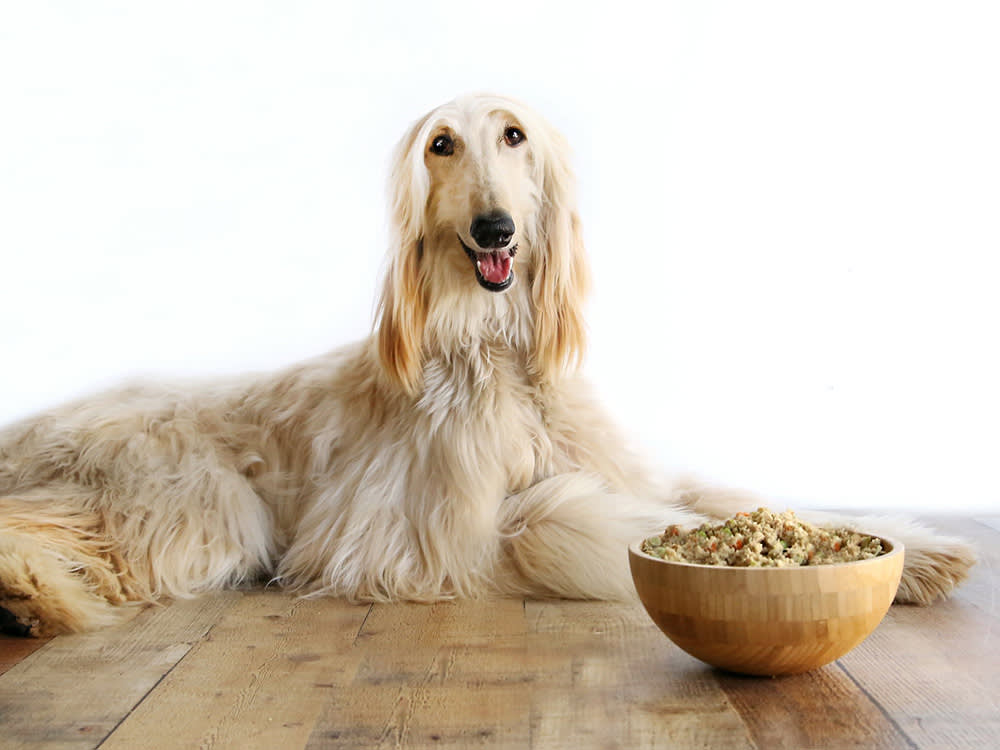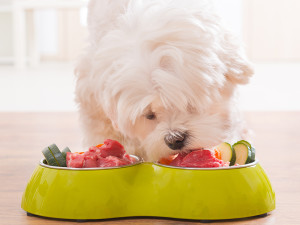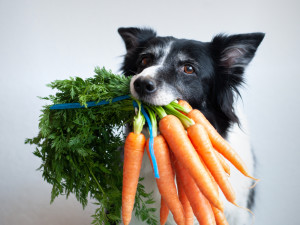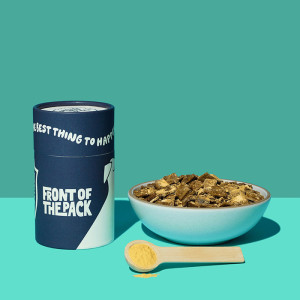Chi Dog Is Dishing Up Chinese Food-Therapy For Your Dog’s Bowl
A (literal) spoonful of medicine.

Share Article
Fresh dog food is gaining in popularity. It’s made from blends of whole-food, human-grade ingredients such as ground meat, sweet potatoesopens in a new tab, broccoli, and even tofu. Dr. Susan Bohrer, CVA, CVFT, and co-founder of the fresh dog food delivery brand Chi Dogopens in a new tab, has seen firsthand how feeding pups this way can improve their well-being.”
She started Chi Dog in 2017 with her co-founder, Dr. Chris Berg. Before that, her line of work involved teaching pet parents how to make whole-food, cooked meals for their dogs at her veterinary clinic, which incorporates the tenants of Chinese food therapy (shí liáo), an aspect of Traditional Chinese Medicine.

Get (totally free) deals for food, treats, accessories, tech, and way more pet parenting must-haves.
opens in a new tabIn essence, it’s all about matching common ailments that our canine companions suffer from to whole-food ingredients that are known to heal. Both Bohrer and Berg have seen their canine clients’ lab work improve for all kinds of issues, from gastrointestinalopens in a new tab (GI) upset to arthritisopens in a new tab.
Chi Dog focuses on lightly cooked, whole-food ingredients that are tailored to address specific health concerns — the same way that a human would use Chinese food therapy. Plenty of research suggests that “food is medicine” — a core tenant of Chinese food therapy — is more than an idiom.
“We’ve been doing things for years, and we wanted to really focus on a whole-food diet that’s as close to the tenants of holistic medicine veterinarians are taught and teach their clients,” Bohrer says. “It’s about matching the right foods to a specific problem, or even which foods to choose to prevent or relieve health issues.”
Chi Dog’s meal plans, which were all developed by a veterinary nutritionist, incorporate Chinese food therapy’s use of “heating” and “cooling” foods opens in a new tabto address certain concerns. Traditionally, heating foods are used to treat conditions like fatigue, digestive issues, and anemia. Cooling foods, on the other hand, treat “hot” conditions, such as dry, itchy skinopens in a new tab, rashes, and constipationopens in a new tab.
“I got frustrated that I kept making these recipes, but there wasn’t a program that holistic vets or pet parents could use to help their dog,” Bohrer adds. “So, we wanted to make food with more intentional ingredients. We wanted the recipes to be based on Chinese medicine and the food that’s used to treat diseases and imbalances.”
For example, the “Earth Diet” is made for dogs who suffer from obesity and inflammation. It’s made from eggs, tofu, and sweet potatoopens in a new tab. The “Fire Diet” is made from a base of turkey, millet, and carrots, and is used to improve heart health, reduce inflammation, and alleviate skin conditions. Each meal contains skin-healthy oils opens in a new taband a proprietary blend of vitamins and minerals to ensure that dogs get everything that they need.
One big difference between Chi Dog and Chinese food therapy is the lack of organ meat, a “heating” food that’s commonly consumed in East Asia and a lot of other places in the world.
“In our industrial food complex, organ meat is not as well-regulated for human consumption because we don’t eat a lot of it,” Bohrer says. For example, one 2020 studyopens in a new tab found a higher prevalence of antimicrobial-resistant food-borne bacteria in grocery store food around Nashville, Tennessee, compared to ground meat.
Another thing that was critical to Bohrer: The food had to be tasty. What pet parent doesn’t want to see their dog tail-waggingly excited to eat? Chi Dog meals may be holistic, but don’t associate it with bland health food.
“We love our dogs, so it makes sense to feed them something that they actually love. I always tell clients, ‘I want you to cook for your dogopens in a new tab every now and then.’ It’s a wonderful way to care for them,” Bohrer says.
But Bohrer also understands that doing that on the regular is too time-consuming for many Americans. “We want to give dogs a wholesome diet so you don’t have to worry about balancing vitamins and mineralsopens in a new tab, and you don’t have to sit there crushing calcium in a mortar and pestle,” she says.
Disclaimer alert: This article is here to share information. But, much like pineapple on pizza, the topic may be controversial. Meaning, not all vets or pet professionals agree. Because every pet is a unique weirdo with specific needs. So, don’t take this as fact or medical advice. Talk things over with your vet when making decisions, and use your best judgment (about both your pet’s health and pizza toppings).

Kat L. Smith
Kat L. Smith is a writer and editor based in Queens, New York. They have written for LIVEKINDLY about a wide range of topics related to sustainability, lifestyle, house plant care, and food. They share their apartment with their adopted dog, Layla, and Vivi, a one-eared cat.
Related articles
![A cat eating a plate of fish on a dining room table.]() opens in a new tab
opens in a new tabCould Fish Reduce Your Pet’s Carbon Footprint? It’s Complicated
All those cartoons of cats staring longingly at fish bowls might not be so far off. A new study suggests seafood in your pets’ diet could help sustainably meet the world’s protein needs.
![Young Female Adult Feeds Her Rottweiler mixed breed Dog]() opens in a new tab
opens in a new tabWholesome Homemade Dog Food Recipes: Vet-Approved Starter Recipe
All it takes is healthy ingredients and a slow cooker.
![A bowl of dog food photographed alongside product packaging from the company, front of the pack.]() opens in a new tab
opens in a new tabThis Food Topper Might Be the One
Front of the Pack’s signature supplement features an all-star list of ingredients to help dogs get the most out of their meals.
![A dog sniffing a mushroom out of a hand.]() opens in a new tab
opens in a new tab6 Mushroom Superfoods that Won’t Turn Your Dog Into a Zombie
Nothing to fear here The Last of Us fans — ’shrooms are great immune-boosters.








